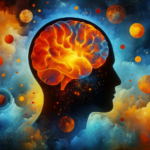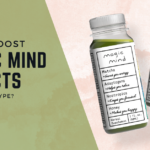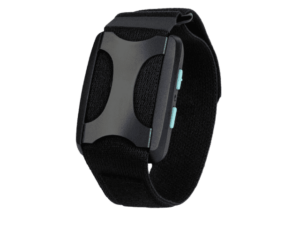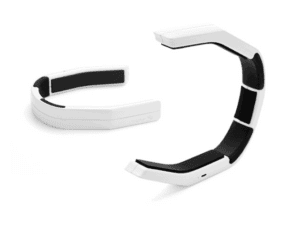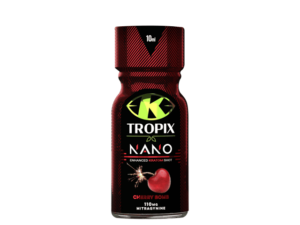It seems like everyone is talking about meditation these days.
Even worse.. they make it sound so easy!
Just sit there and focus on not thinking.

Anyone who has tried meditation knows how complex this seemingly simple practice is.
With the stress of our modern world tugging at every fiber of our attention, finding that moment of quiet is more difficult than ever.
Fortunately, there’s the Muse Headband, which bypasses all the clutter that makes meditation so hard and taps right into your brain, dialing up the exact brainwaves you need to reach peak mindfulness.
The following review highlights some of the most important things to consider before purchasing a Muse headband.
Biohack Your Brainpower
What is the muse headband?
Muse Headband is a finely calibrated EEG device that is connected to your smartphone via Bluetooth and integrated with the Muse Meditation app.

The Muse Headband processes advanced neuro signals to interpret your mental activity and guides you through your meditation process.
There are seven EEG sensors in the Muse Headband.
Two of them are positioned on the forehead, two behind each ear, and three additional reference sensors to detect and measure the user’s brain activity optimally.
Muse S vs. Muse 2
Both Muse S and Muse 2 are incorporated with similar biofeedback sensors such as the EEG, PPG, accelerometer, and gyroscope.
The meditation features are also similar between the 2 devices.
The biggest difference is that the Muse S has an additional sleep tracking function that is not offered by Muse 2.
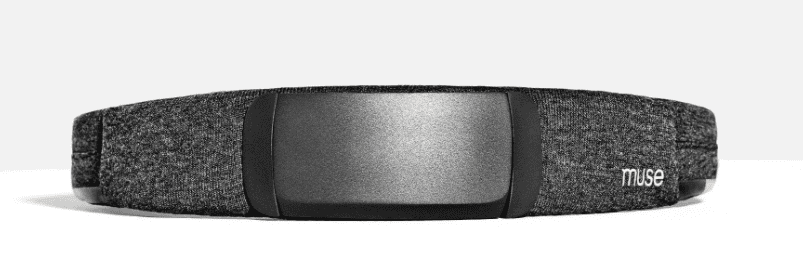
The Muse S has an additional sleep feature not offered on the Muse 2 that aids and tracks your sleep.
Boosting sleep performance can be a game-changer in your overall health so the upgrade should be considered.
Tech Disparities Between Muse S and Muse 2
There are also some technical differences between Muse S and Muse 2.
These include:
- Battery life
- Materials and Fabrics
- Weight
- Price
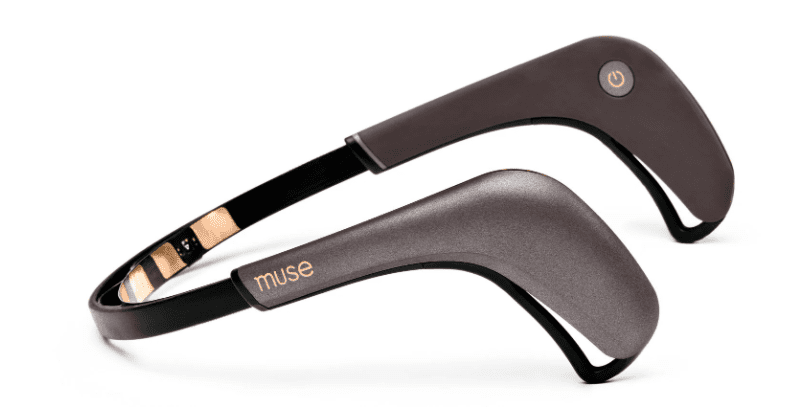
For instance, the Muse S battery can last up to 10 hours while the Muse 2 lasts up to 5 hours.
Muse S is made of a comfort-fit fabric comprising 90% Rayon, 5% Nylon, and 5% Spandex, whereas the Muse 2 is made of flexible polycarbonate material with conductive silicone.
The Muse S is relatively lighter in weight than the Muse 2, making it more comfortable to use.
In terms of their price, Muse S is comparatively more expensive than Muse 2.
The Muse and EEG
The Muse works on the principle of neurofeedback utilizing a brain-sensing modality such as the EEG.
The Muse calibrates with the electric impulses generated by the brain, also called the “brainwaves,” which are broadly classified as delta, theta, alpha, beta, and gamma, based on their amplitudes and frequencies.

The Muse uses a complex algorithm to interpret these waves as detectable reflections of the complex neuronal processes and impact the user’s experience of being, thinking, and perceiving.
In other words, the Muse can effectively train the brain through an advanced real-time neurofeedback mechanism.
Muse and Meditation
In a recent study with forty participants, aimed to test the efficacy of technology-mediated mindfulness-based meditation practice, the experimental group used the Muse Headband for daily meditation for a period of four weeks.
The study concluded that technology-mediated mindfulness meditation could be considered a form of mental training that can substantially optimize cognitive performance.1Michela Balconi ,Giulia Fronda ,Irene Venturella , andDavide Crivelli, Conscious, Pre-Conscious and Unconscious Mechanisms in Emotional Behaviour. Some Applications to the Mindfulness Approach with Wearable Devices Appl. Sci. 20172Davide Crivelli, Giulia Fronda, Irene Venturella & Michela Balconi , Supporting Mindfulness Practices with Brain-Sensing Devices. Cognitive and Electrophysiological Evidences Mindfulness volume. 20183Andresen, J., Meditation meets behavioural medicine. The story of experimental research on meditation Journal of Consciousness Studies. 20004Sheffy Bhayee, Patricia Tomaszewski, Daniel H. Lee, Graeme Moffat, Lou Pino, Sylvain Moreno & Norman A. S. Farb, Attentional and affective consequences of technology supported mindfulness training: a randomised, active control, efficacy trial BMC Psychology 20165Britta K Hölzel , Sara W Lazar , Tim Gard , Zev Schuman-Olivier , David R Vago , Ulrich Ott, How Does Mindfulness Meditation Work? Proposing Mechanisms of Action From a Conceptual and Neural Perspective Perspect Psychol Sci. 20116Anna Lardone, Marianna Liparoti, Pierpaolo Sorrentino,Rosaria Rucco, Francesca Jacini, Arianna Polverino, Roberta Minino,Matteo Pesoli, Fabio Baselice,Antonietta Sorriso, Giampaolo Ferraioli,Giuseppe Sorrentino,and Laura Mandolesi , Mindfulness Meditation Is Related to Long-Lasting Changes in Hippocampal Functional Topology during Resting State: A Magnetoencephalography Study Neural Plast. 2018
Benefits
Having a mindfulness device like the Muse comes with many short and long-term benefits.
Almost immediately after using a Muse device, you’ll notice improvements in focus, mood, and stress relief.
Each of these will help your overall physical and mental health in the long term.
Focus
Meditation can help fixate your thoughts, boost your concentration, and improve your mind’s ability to focus.

Mood
Evidence suggests that practicing meditation regularly can induce calmness and overall enhance mood.
Mindfulness meditation can also considerably improve the trends in mood swings by regulating our emotions.10Aleezé Sattar Moss , Nancy Wintering, Hannah Roggenkamp, Dharma Singh Khalsa, Mark R Waldman, Daniel Monti, Andrew B Newberg, Effects of an 8-week meditation program on mood and anxiety in patients with memory loss J Altern Complement Med. 201211Kim E Innes , Terry Kit Selfe , Dharma Singh Khalsa , Sahiti Kandati , Effects of Meditation versus Music Listening on Perceived Stress, Mood, Sleep, and Quality of Life in Adults with Early Memory Loss: A Pilot Randomized Controlled Trial J Alzheimers Dis. 201612Lindsay S. Nagamatsuc and Sabrina D. Ford, Can meditation improve attention in older adults? Study protocol for a 4-week proof-of-concept intervention Pilot Feasibility Stud. 201913Lorenza S Colzato , Roberta Sellaro , Iliana Samara , Matthijs Baas , Bernhard Hommel, Meditation-induced states predict attentional control over timeConscious Cogn. 2015
Stress Relief
Meditation can induce a state of deep relaxation and relieve stress and anxiety.
The postulated stress-buffering framework of meditation works on two physiological pathways, namely the regulatory pathway and the reactivity pathway, which improves overall wellbeing by a drastic reduction in stress.14R Atchley , D Klee , T Memmott , E Goodrich , H Wahbeh , B Oken, Event-related potential correlates of mindfulness meditation competenceNeuroscience. 201615Michela Balconi ,Giulia Fronda ,Irene Venturella and Davide Crivelli, Conscious, Pre-Conscious and Unconscious Mechanisms in Emotional Behaviour. Some Applications to the Mindfulness Approach with Wearable Devices Appl. Sci. 201716J David Creswell , Emily K Lindsay, Daniella K Villalba, Brian Chin, Mindfulness Training and Physical Health: Mechanisms and Outcomes Psychosom Med. 201917Viviane Freire Bueno, Elisa H Kozasa , Maria Aparecida da Silva, Tânia Maria Alves , Mario Rodrigues Louzã, Sabine Pompéia, Mindfulness Meditation Improves Mood, Quality of Life, and Attention in Adults with Attention Deficit Hyperactivity Disorder Biomed Res Int. 2015

In the long-term relieving stress has the ability to boost your heart rate variability and induce a more parasympathetic nervous system response.
Wrapping Up
The Muse headband is a great tool for both meditation newbies and pros.
Meditation is a practice because it takes so long to see noticeable benefits.
Tools like the Muse instantly stimulate the brainwaves needed to induce meditation benefits.
If you’re looking to get the benefits from meditation sooner, try a Muse for yourself!
- 1Michela Balconi ,Giulia Fronda ,Irene Venturella , andDavide Crivelli, Conscious, Pre-Conscious and Unconscious Mechanisms in Emotional Behaviour. Some Applications to the Mindfulness Approach with Wearable Devices Appl. Sci. 2017
- 2Davide Crivelli, Giulia Fronda, Irene Venturella & Michela Balconi , Supporting Mindfulness Practices with Brain-Sensing Devices. Cognitive and Electrophysiological Evidences Mindfulness volume. 2018
- 3Andresen, J., Meditation meets behavioural medicine. The story of experimental research on meditation Journal of Consciousness Studies. 2000
- 4Sheffy Bhayee, Patricia Tomaszewski, Daniel H. Lee, Graeme Moffat, Lou Pino, Sylvain Moreno & Norman A. S. Farb, Attentional and affective consequences of technology supported mindfulness training: a randomised, active control, efficacy trial BMC Psychology 2016
- 5Britta K Hölzel , Sara W Lazar , Tim Gard , Zev Schuman-Olivier , David R Vago , Ulrich Ott, How Does Mindfulness Meditation Work? Proposing Mechanisms of Action From a Conceptual and Neural Perspective Perspect Psychol Sci. 2011
- 6Anna Lardone, Marianna Liparoti, Pierpaolo Sorrentino,Rosaria Rucco, Francesca Jacini, Arianna Polverino, Roberta Minino,Matteo Pesoli, Fabio Baselice,Antonietta Sorriso, Giampaolo Ferraioli,Giuseppe Sorrentino,and Laura Mandolesi , Mindfulness Meditation Is Related to Long-Lasting Changes in Hippocampal Functional Topology during Resting State: A Magnetoencephalography Study Neural Plast. 2018
- 7Yi-Yuan Tang, Britta K Hölzel , Michael I Posner , The neuroscience of mindfulness meditationNat Rev Neurosci. 2015
- 8Antonietta Manna , Antonino Raffone, Mauro Gianni Perrucci, Davide Nardo, Antonio Ferretti, Armando Tartaro, Alessandro Londei, Cosimo Del Gratta, Marta Olivetti Belardinelli, Gian Luca Romani, Neural correlates of focused attention and cognitive monitoring in meditation Brain Res Bull. 2010
- 9Alessandro Grecucci , Edoardo Pappaianni , Roma Siugzdaite , Anthony Theuninck , Remo Job, Mindful Emotion Regulation: Exploring the Neurocognitive Mechanisms behind Mindfulness Biomed Res Int. 2015
- 10Aleezé Sattar Moss , Nancy Wintering, Hannah Roggenkamp, Dharma Singh Khalsa, Mark R Waldman, Daniel Monti, Andrew B Newberg, Effects of an 8-week meditation program on mood and anxiety in patients with memory loss J Altern Complement Med. 2012
- 11Kim E Innes , Terry Kit Selfe , Dharma Singh Khalsa , Sahiti Kandati , Effects of Meditation versus Music Listening on Perceived Stress, Mood, Sleep, and Quality of Life in Adults with Early Memory Loss: A Pilot Randomized Controlled Trial J Alzheimers Dis. 2016
- 12Lindsay S. Nagamatsuc and Sabrina D. Ford, Can meditation improve attention in older adults? Study protocol for a 4-week proof-of-concept intervention Pilot Feasibility Stud. 2019
- 13Lorenza S Colzato , Roberta Sellaro , Iliana Samara , Matthijs Baas , Bernhard Hommel, Meditation-induced states predict attentional control over timeConscious Cogn. 2015
- 14R Atchley , D Klee , T Memmott , E Goodrich , H Wahbeh , B Oken, Event-related potential correlates of mindfulness meditation competenceNeuroscience. 2016
- 15Michela Balconi ,Giulia Fronda ,Irene Venturella and Davide Crivelli, Conscious, Pre-Conscious and Unconscious Mechanisms in Emotional Behaviour. Some Applications to the Mindfulness Approach with Wearable Devices Appl. Sci. 2017
- 16J David Creswell , Emily K Lindsay, Daniella K Villalba, Brian Chin, Mindfulness Training and Physical Health: Mechanisms and Outcomes Psychosom Med. 2019
- 17Viviane Freire Bueno, Elisa H Kozasa , Maria Aparecida da Silva, Tânia Maria Alves , Mario Rodrigues Louzã, Sabine Pompéia, Mindfulness Meditation Improves Mood, Quality of Life, and Attention in Adults with Attention Deficit Hyperactivity Disorder Biomed Res Int. 2015



